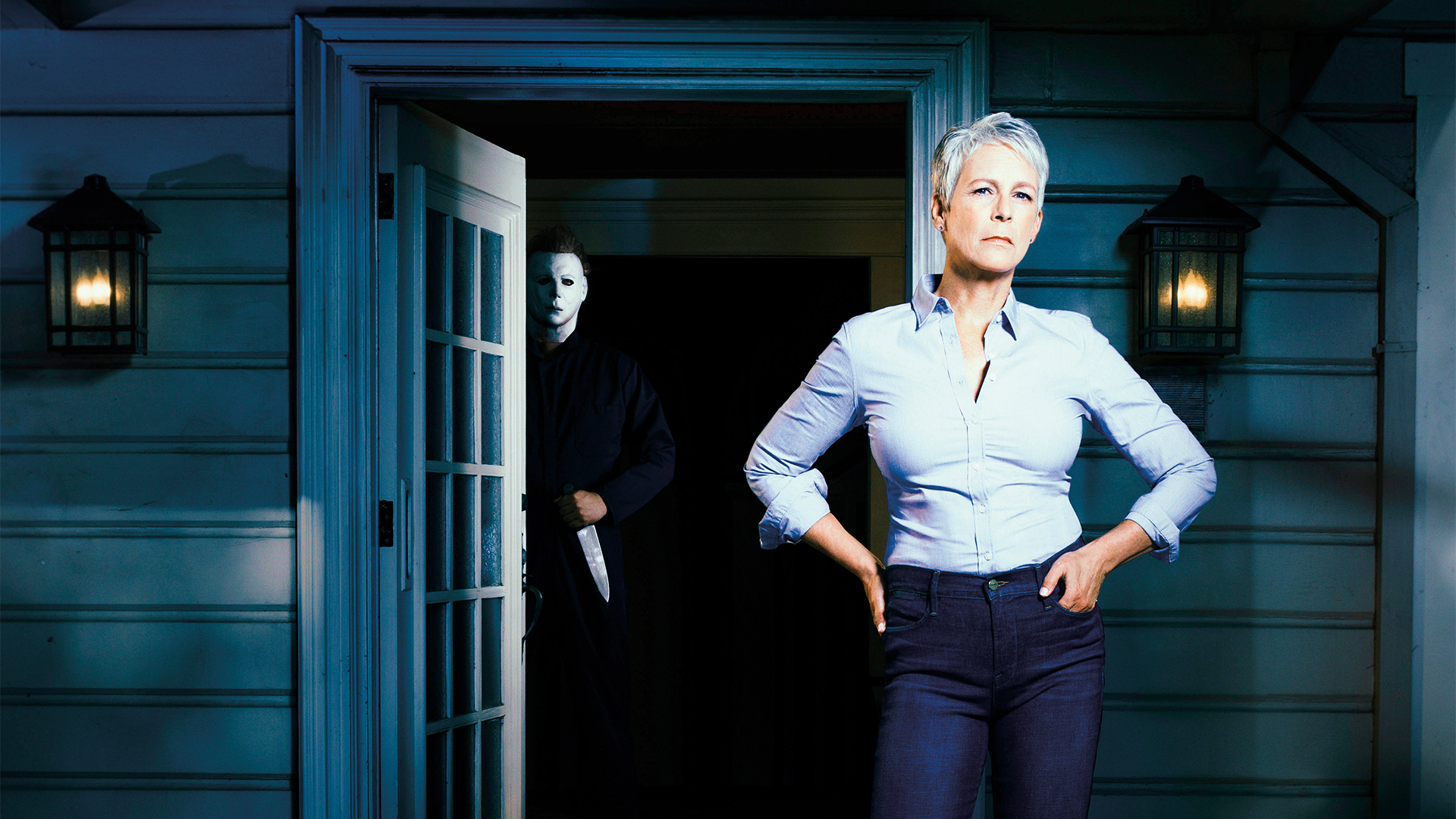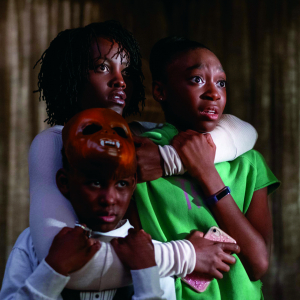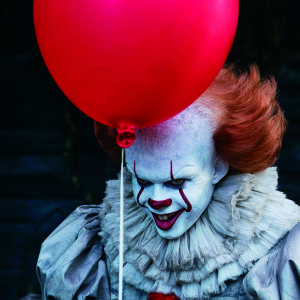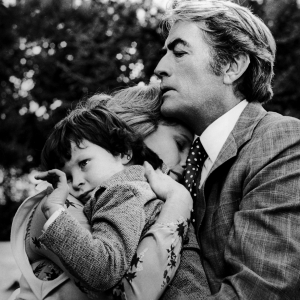Why horror is the genre for our times
A woman in a red jumpsuit opens her mouth to speak. Her voice is strained, every word an act of will. “Once upon a time, there was a girl, and the girl had a shadow.” Jordan Peele’s Us (2019) begins with a loving family being terrorized by their doppelgängers. The shadows are rising, the speaker is saying. And she’s one of them. But the difference between the girl and her shadow, us and them, is less stable than it seems. Horror thrives on this instability. We hate-love our monsters. We’re terrified-exhilarated by the collapse of the norms we live by. We’re rooting for the girl … and the shadow? Ambivalence: it makes room for imagining remaking the world in the wake of the monster, room for imagining an Us that isn’t violently opposed to a Them.
Horror films have always played with the anxieties that dominate their time
“ ”Peele’s critically acclaimed horror films—Get Out (2017) and Us—are part of a contemporary resurgence in the genre. Horror today can feature A-list actors like Lupita Nyong’o (Us), Jessica Chastain (IT Chapter Two; 2019), and Toni Collette (Hereditary; 2018). The two installments of IT (2017 and 2019), adapted from Stephen King’s 1986 bestseller, have been end-of-summer blockbusters that attract horror fans and genre newbies alike. A return to the Halloween franchise has re-energized the slasher film for this #MeToo moment. And Get Out inspired a course at UCLA (University of California, Los Angeles) called The Sunken Place: Racism, Survival, and Black Horror Aesthetic. Horror is undergoing a renaissance that harkens back to the genre’s golden age in the 1970s, when Gregory Peck starred in The Omen (1976) and The Exorcist (1973) was nominated for 10 (10!) Academy Awards. Now, like then, the house of horror is filled with movie stars, visionary directors, and socially relevant storytelling.
Us (2019), Moviestore Collection Ltd./Alamy Stock photo. It (2017), Entertainment Pictures/Alamy Stock Photo. The Omen (1976), PictureLux/The Hollywood Archive/Alamy Stock Photo.
So why horror, and why now?
Well, today we’re arguing about what we should fear and why. In the United States (still the nation with the most powerful film industry in the world), the present is characterized by a waning of popular consent to the social and political order. Familiar storylines are circulating that locate happiness with the status quo and demonize those who challenge it: good citizens menaced by migrants; fine men persecuted by militant feminists. These narratives draw on deep cultural scripts that make some of us into Others—outsiders who threaten ordinary people and their ordinary lives. And since the logic of otherness is the logic of monstrosity, we’re already in the vicinity of the horror story. But those who are used to being cast as monsters are talking back. From anti-racism activists to gendernonconforming people, to those who say #MeToo, Others are telling stories that locate fear and threat in everyday places. These are stories about how “normal” life can dissolve without warning, about how a walk or a workday can become, well, a horror show.
So, from one perspective, monsters are attacking the status quo. But from another perspective, the status quo makes monsters and then punishes them—us—for existing. Horror stories tend to operate between these perspectives, shuttling back and forth in ways that raise questions about the futures we want, the futures we fear, and what we mean by “we.”
Horror films have always played with the anxieties that dominate their moment. During the Great Depression, films like White Zombie (1932) appropriated the zombie—a figure that belongs to Afro-Caribbean cosmologies and encodes the terrors of enslavement—to speak to Americans steeped in capitalist crisis. In the 1950s, space invasion films like The War of the Worlds (1953) channeled Cold War-era fears of Soviet infiltration. And in the 1960s, films like Repulsion (1966) and Barbarella (1968) explored the terrain of feminine sexuality opened up by the women’s movement. Film posters for these titles and more are featured in the ROM’s It’s Alive! exhibition, which invites us to immerse ourselves in the visual grammar of horror storytelling: monsters and aliens, vixens and victims … and everything in between.
It’s fitting that this exhibition of classic horror art culminates in the 1970s, a moment not unlike our own. The seventies, too, were a time of dissent. Dominant ideas about American greatness were unraveling in the face of Vietnam and Watergate. And movements like Black Power and radical feminism were working toward total reorganizations of the social order. Assessing the role of horror in this context, film critic Robin Wood wrote that it was “in the 70s the most important of all American genres and perhaps the most progressive, even in its overt nihilism.” The moral clarity of the early postwar period was long gone, and anxieties about young people as estranged versions of ourselves began making their way into the genre. Films like The Exorcist channeled bad feelings about the youth counterculture into the figure of the demonic child. As King put it, The Exorcist addressed “all those parents who felt, in a kind of agony and terror, that they were losing their children and could not understand why or how it was happening.” Around this time, a new subgenre rife with murdered teens also sliced its way into cinemas: the slasher film. So, young people were both punishing and punished in seventies horror—the sure sign of a culture with mixed feelings about its future.
Horror rises to the surface in times of cultural crisis because dominant ideas about what’s “normal” and what’s “good” begin to falter
“ ”Horror is good to think with in times of cultural crisis because ambivalence is its bread and butter. Wood offered this basic formula for a horror story: “Normality is threatened by the monster.” But he went on to observe that we tend to be ambivalent about our monsters. The preteen protagonist of The Exorcist is repulsive; she vomits bile and pees in public and says things no one should say to their mother. She’s revolting, but she’s also, you know, revolting—a rebel bucking against feminine norms and father figures alike. Her transgressions are fascinating. And if we have mixed feelings about the monster, then we probably have mixed feelings about normality, too. If part of us wants the monster or identifies with its outsiderness, we might watch in horrified pleasure as it tears the world apart. This is what the genre offers: horrified pleasure, terrified excitement—grief, disgust, outrage, and wonder all at once. In the midst of all those unresolved feelings, there’s room for the imagination to play.
Consider slasher films as a case study. Alfred Hitchcock’s Psycho (1960) is widely acknowledged as a forerunner, but the slasher blueprint really solidified in the 1970s with films like The Texas Chainsaw Massacre (1974), the Canadian cult classic Black Christmas (1974), and the original Halloween (1978). On one level, these films, like many horror films, present white Christian heteropatriarchal families as the gold standard for goodness. In early slashers, teenagers die in an order determined by degrees of sexual promiscuity, and the girl left standing after the bloodbath—the one Carol Clover called the “Final Girl”—is a virgin. From this angle, slashers skew conservative: they enact a purifying ritual in which a girl on the cusp of acceptable white womanhood is spared from the slaughter. If we assume she’s a future wife and mother, then her survival validates the white family and the good future it supposedly represents.
But what if we don’t make that assumption? What if, instead, we notice the Final Girl has endured a steady stream of violence and terror despite doing everything right? She’s a good girl, which is supposed to mean she’s earned social and familial protection. That’s the deal. But when a man-shaped nightmare lunges out of the dark, her white knights evaporate: Dad doesn’t believe her; her boyfriend dies a bloody death; her neighbours assume she’s pranking. From this angle, the Final Girl is a feminist. She’s a survivor who now recognizes, if she didn’t before, that the norms of white girlhood won’t save her.
New slasher films are taking this insight to heart. An upcoming remake of Black Christmas promises that its badass sorority girls will, as the poster puts it, “slay.” And last year, 40 years after the original Halloween, Jamie Lee Curtis reprised her role as one of the original Final Girls: Laurie Strode. Now pushing 60 years old, Laurie is a twicedivorced alcoholic who’s waiting—training—for the return of a boogeyman. Halloween (2018) reminds us that Final Girls grow up—that after the credits roll, there are survivors transformed by trauma and alienated from a social and familial order that failed to protect them. In that respect, the Final Girl is a monster in the making.
She’s not the only figure from the house of horror making a comeback these days. Pop culture critics like Sherronda Brown have pointed out that Peele’s Get Out is a modern heir to the zombie horror subgenre. And while zombies themselves have been a horror staple for decades, Get Out brings back a figure unseen in Hollywood since the 1930s and ’40s: the zombie master. Peele’s zombie master is a rich white woman who uses a teacup to hypnotize her victims—black subjects whose bodies will be stolen by white people seeking immortality. With the return of the zombie master, the zombie is returned to its roots in histories of slavery and colonialism.
The horror genre has always been teeming with radical storytelling potential. It rises to the surface in times of cultural crisis because dominant ideas about what’s “normal” and what’s “good” begin to falter. When easy answers to complicated questions aren’t as persuasive as they used to be, the terrain of horror storytelling expands. Fear becomes unstuck from the usual suspects, which means it might land somewhere new (a white woman and her teacup in Get Out). The lines dividing human and monster, us and them, begin to blur (a girl and her shadow in Us). Normality is exposed as a fantasy, a category that’s policed because it doesn’t exist. And when the norms we live by come into view as impossible fictions, well …
That’s when monsters come out to play.





